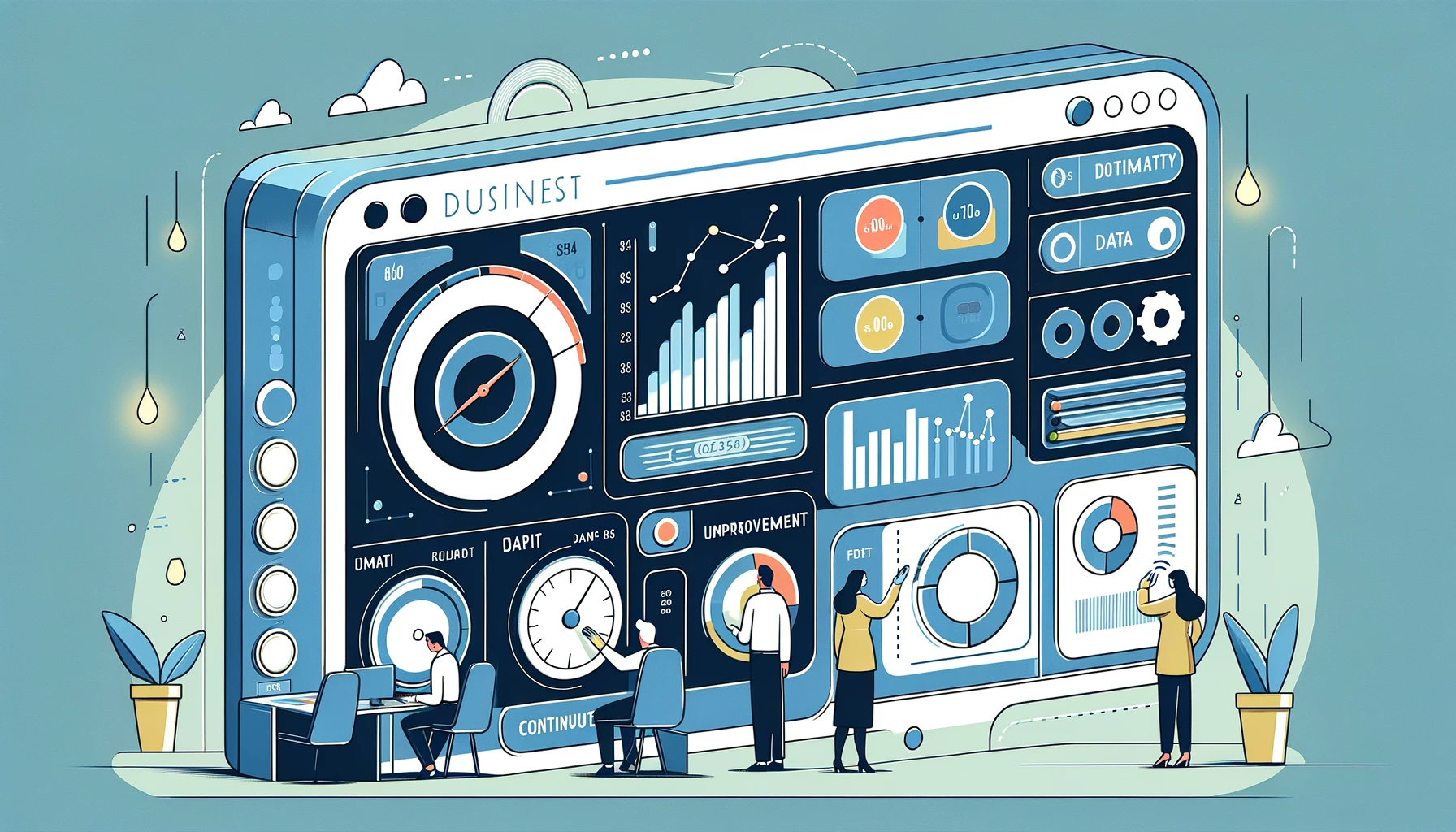Data Hygiene Essentials: Elevate Your Data Quality for Success
Unlock the secrets to pristine data with our guide on data hygiene, ensuring accuracy and boosting your business's decision-making process.
Part 1. Data Hygiene Essentials: Elevate Your Data Quality for Success
Part 2. Data Hygiene Services: Elevate Your Data Quality and Compliance
Part 3. Data Hygiene Tools: Enhance Your Data Quality and Accuracy
Part 4. Data Hygiene Best Practices: Elevate Your Data Quality Today
Part 5. What is Data Hygiene: Essential Practices for Data Quality
Harnessing the Power of Clean Data
In the digital age, your company’s data is a goldmine of insights, but only if it’s kept in top condition. Data hygiene is not just a buzzword—it’s a critical business strategy that impacts every facet of your organization. From enhancing customer management to refining human-resource-management, clean data drives success.
Imagine your data as the engine of a high-performance car. Without regular maintenance, the performance drops, and issues pile up. In the business realm, poor data hygiene can lead to incorrect analytics, misguided strategies, and ultimately, a loss in revenue. On the flip side, a robust data hygiene protocol can lead to an average increase in sales leads by ~11%, proving its undeniable value.
Let’s break down the tangible benefits with a clear comparison:
| Metric | Before Implementation | After Implementation | Improvement |
|---|---|---|---|
| Lead Conversion Rate (%) | 2 |
3.5 |
+75% |
| Marketing Campaign ROI (%) | 180 |
220 |
+22.2% |
| Data Entry Time (hours/week) | 20 |
12 |
-40% |
| Customer Satisfaction Score (out of 10) | 6 |
8.5 |
+41.7% |
By prioritizing data hygiene, you’re not just cleaning up databases; you’re setting up your business for scalable growth and efficiency. With the right AI tools for business, such as ERP AI systems, you can automate and maintain data quality with minimal effort.

Embrace data hygiene and watch your business flourish with data-driven decisions that hit the mark every time.
The Pillars of Effective Data Hygiene
Embarking on a journey to optimize your data hygiene practices is pivotal for any data-driven business. At the core of effective data hygiene are four key pillars: identification, cleansing, enhancement, and maintenance.
Firstly, identification involves pinpointing inaccuracies and inconsistencies in your data. This is where tools like data validation come into play, ensuring that your data is accurate and usable. Once identified, cleansing is the next step. This is the process of rectifying or removing erroneous data, which can drastically improve the quality of your insights.
Next, enhancement is about adding value to your existing data through enrichment. This could mean integrating additional relevant data from external sources to provide a more comprehensive view. Finally, maintenance is the ongoing commitment to keep your data clean. This involves regular audits and updates, ensuring that the data remains relevant and accurate over time.
By following these pillars, you’re not just improving your data; you’re enhancing your entire integrated business solutions system. With clean data, you can expect to see an uptick in operational efficiency and a clearer path to achieving your business goals.
| Pillars of Data Hygiene | Description |
|---|---|
| Identification | Detect data inaccuracies |
| Cleansing | Correct or remove errors |
| Enhancement | Enrich and add value |
| Maintenance | Regular audits and updates |

Implement these pillars within your organization and transform your raw data into a strategic asset that propels you towards success.
Data Hygiene in Action: Real-World Success Stories
In the competitive landscape, companies that leverage data hygiene effectively often outshine their rivals. Consider a mid-sized e-commerce firm that implemented a rigorous data cleansing protocol. By doing so, they witnessed a 14% increase in customer retention and a significant drop in cart abandonment rates. This is a testament to how clean data can enhance the customer experience and boost loyalty.
Another success story comes from a marketing agency that adopted data enhancement practices. Post-implementation, they saw a 12% rise in campaign effectiveness. This was achieved by enriching customer profiles, allowing for more targeted and personalized campaigns.
These real-world examples underline the transformative impact of data hygiene on operational success. By embracing these practices, your company can unlock the full potential of its data, leading to smarter strategies and a formidable competitive edge.

Remember, maintaining pristine data isn’t just a one-time task—it’s a continuous journey that can lead your business to new heights. Make data hygiene a cornerstone of your strategy and join the ranks of success stories.
Starting Your Data Hygiene Journey: A Beginner’s Guide
Embarking on your data hygiene journey might seem daunting, but with the right approach, you can streamline your processes for long-term benefits. Start by assessing your current data quality to identify areas needing immediate attention. This initial step is crucial for setting the stage for a successful data hygiene strategy.
Next, invest in robust data quality management tools that automate cleansing and validation, saving you time and reducing human error. Develop a data hygiene plan that includes regular checks and maintenance; this will help you avoid the pitfalls of outdated or incorrect data.
Remember, good data hygiene is about creating a culture of quality within your company. Train your team to understand the importance of clean data and the role it plays in decision-making. With everyone on board, you’ll find it easier to maintain high data standards.

As you dive into this journey, keep in mind that data hygiene is an ongoing process. It requires commitment but the payoff—in the form of reliable, actionable data—is well worth the effort. Start small, think big, and watch as your data becomes a beacon of insight, guiding your business forward.
Streamlining Processes with Data Hygiene Best Practices
Elevating your business operations starts with streamlining processes, and incorporating data hygiene best practices is the key. Clean, accurate data ensures that every department, from sales to support, operates like a well-oiled machine. A clear data hygiene plan minimizes errors and provides your team with the confidence to make quick, informed decisions.
To effectively streamline your processes, regular data audits are essential. They help identify issues before they escalate, keeping your data pool free of clutter. Implementing a standard procedure for data entry can also prevent errors at the source, significantly enhancing your overall data quality.
Adopting these best practices doesn’t just improve current operations—it sets a solid foundation for future growth. As your data becomes more reliable, so does your ability to scale and introduce new, innovative strategies.

Remember, it’s not just about having data; it’s about having data that works for you. Prioritize data hygiene and watch as your business processes become more efficient and effective.
| Benefits of Data Hygiene | Impact on Processes |
|---|---|
| Reduced Errors | Smoother Operations |
| Improved Data Access | Faster Decision Making |
| Enhanced Data Security | Increased Trust |
With these best practices, your data won’t just be clean—it’ll be a strategic asset driving your business success.
FAQs
What is data hygiene and why is it important?
Data hygiene refers to the processes and practices that ensure the cleanliness, accuracy, and consistency of data within a database or dataset. It is important because clean and well-maintained data can lead to more accurate analyses, better decision-making, and can prevent costly errors that might arise from working with outdated or incorrect information.
What are some common data hygiene practices?
Common data hygiene practices include data validation (ensuring data conforms to certain standards or formats), deduplication (removing duplicate records), data cleansing (correcting or removing erroneous data), data enrichment (enhancing data with additional information from external sources), and regular data audits to check for and resolve any data quality issues.
How often should data hygiene be performed?
The frequency of data hygiene practices depends on the nature of the data and how it's being used. For data that is constantly being updated or is critical for daily operations, hygiene might be a continuous process. In other cases, a regular schedule such as weekly, monthly, or quarterly may be appropriate. It's important to establish a routine that aligns with the business needs and data usage patterns.
Can poor data hygiene impact business decisions?
Yes, poor data hygiene can significantly impact business decisions. Decisions based on inaccurate, incomplete, or outdated data can lead to misinformed strategies, ineffective marketing campaigns, lost revenue, and can even damage the reputation of a business if the errors are outward-facing.
What tools or software can assist with data hygiene?
There are various tools and software solutions available to assist with data hygiene. These range from simple database management tools with built-in data cleansing functions to sophisticated data quality management platforms that offer a suite of features for data validation, cleansing, deduplication, and enrichment. Some popular examples include Talend, IBM InfoSphere Information Server, and SAS Data Management.




